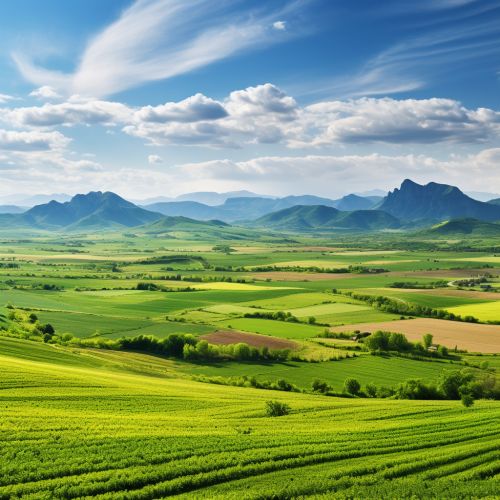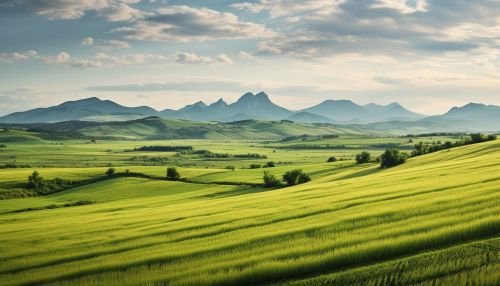Slovakia
Geography
Slovakia, officially known as the Slovak Republic, is a landlocked country in Central Europe. It is bordered by five countries: Poland to the north, Ukraine to the east, Hungary to the south, Austria to the west, and the Czech Republic to the northwest. Slovakia's territory spans about 49,035 square kilometers, which ranks it as the 39th largest country in Europe.


The country's topography is notably varied. In the northern part of Slovakia, you will find mountains, which are part of the Carpathian Mountain range. The highest point is the Gerlachovský Peak at 2,655 meters. The southern part of the country is characterized by plains and hills, part of the Pannonian Plain.
Slovakia is also home to numerous rivers, the longest of which is the Danube River, flowing through the country's capital, Bratislava. Other significant rivers include the Váh, Hron, and Hornád.
Climate
Slovakia has a temperate and continental climate, with relatively hot summers and cold, cloudy, and humid winters. The climate varies between the mountainous regions and the lowlands. The mountainous regions have a subarctic climate with cool summers and very cold winters. In contrast, the lowlands experience a continental climate, with hot summers and cold winters.
History
The history of Slovakia is characterized by its strategic location in Europe. It has been inhabited for thousands of years by various cultures, including the Celts and Romans. In the Middle Ages, most of the area was part of the Kingdom of Hungary, and later, the Habsburg (later Austrian) Empire.
The Slovaks' struggle for autonomy took center stage in the 19th century. The formation of the dual Austro-Hungarian monarchy in 1867 was followed by a period of Magyarization, which sparked a surge in Slovak nationalism and the foundation of the Slovak National Party in 1871.
The 20th century was marked by the quest for self-determination. Following the dissolution of Austria-Hungary after World War I, Slovakia and the regions of Bohemia and Moravia formed a common state, Czechoslovakia, in 1918. Despite being a unitary state, Slovakia retained its own language and schools.
During World War II, Slovakia became a separate republic, a satellite state of Nazi Germany. Post-war, it was re-incorporated into Czechoslovakia. The Prague Spring of 1968 brought further decentralization of the Czechoslovak federation, but was crushed by Warsaw Pact troops' invasion.
In 1993, following the peaceful Velvet Revolution and the Velvet Divorce, Slovakia became an independent state.
Politics
Slovakia is a parliamentary democratic republic with a multi-party system. The last parliamentary elections were held in 2020 and the largest party is the Ordinary People and Independent Personalities (OLaNO). The head of state is the president, currently Zuzana Čaputová, elected in 2019. The head of government is the Prime Minister, currently Eduard Heger.
The Slovak constitution provides for a unicameral parliament, known as the National Council, with 150 members elected for four-year terms. The government is accountable to the National Council, which has the power to dismiss it by a vote of no confidence.
Slovakia joined the European Union and NATO in 2004, the Schengen area in 2007, and the Eurozone in 2009.
Economy
Slovakia has a high-income advanced economy with one of the fastest growth rates in the European Union and the OECD. The country joined the OECD in 2000, the Eurozone in 2009, and the Schengen Area in 2007.
The country's economy is driven by various sectors including automotive, electronics, mechanical engineering, chemical engineering, information technology, biotechnology, and services. Slovakia is the largest per-capita car producer in the world, with over a million cars produced annually in a country with a population of less than 5.5 million people.
Culture
Slovakia is rich in folk traditions, which are manifested in music, dances, folklore, customs, and traditional costumes. The country is also known for its architectural treasures, including castles, churches, and historic towns. The country's cultural heritage is reflected in the many museums, galleries, and preservation areas.
Slovakia's official language is Slovak, a member of the Slavic language family. The country's religious landscape is predominantly Roman Catholic, but there is a significant Protestant minority.
Education
The education system in Slovakia is divided into three levels: primary, secondary, and higher education. It has a literacy rate of 99.6%, one of the highest in the world. Higher education is managed by universities, which offer bachelor's, master's, and doctoral degrees.
